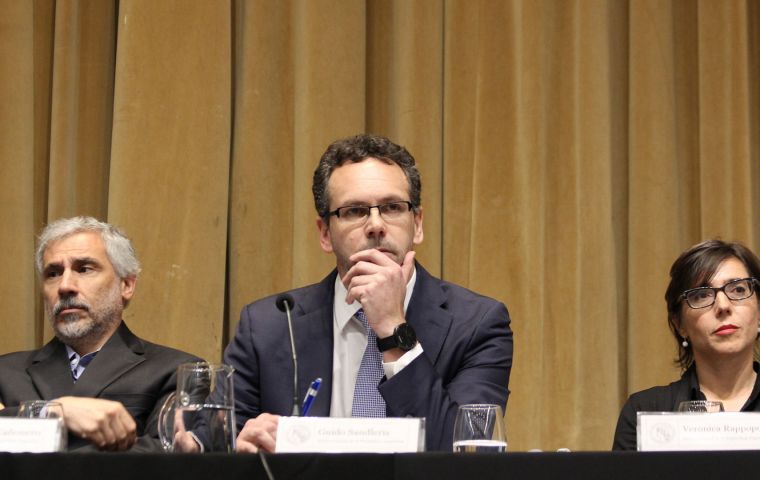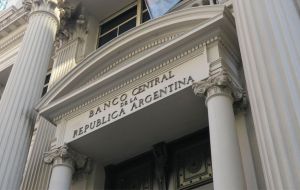MercoPress. South Atlantic News Agency
Beijing currency swap support for Argentina
 “A US$ 9 billion expansion of the ‘swap’ with China is practically closed,” Guido Sandleris was quoted saying in an interview with La Nacion published on Sunday
“A US$ 9 billion expansion of the ‘swap’ with China is practically closed,” Guido Sandleris was quoted saying in an interview with La Nacion published on Sunday  The shake-up comes as Argentina’s central bank has struggled to contain a more than 50% slide in the peso and inflation set to rise 40% this year
The shake-up comes as Argentina’s central bank has struggled to contain a more than 50% slide in the peso and inflation set to rise 40% this year Argentina has “nearly closed” a new currency swap deal with China that will add the equivalent of US$ 9 billion to the South American country’s reserves, the central bank said on Sunday. Argentina and China first agreed to a swap program in 2009 to boost the South American country’s dwindling reserves under former President Cristina Fernandez. Last year, the center-right government of President Mauricio Macri and China agreed to extend the program for three more years.
“A US$ 9 billion expansion of the ‘swap’ with China is practically closed,” Guido Sandleris was quoted saying in an interview with La Nacion published on Sunday. A spokesman for the central bank confirmed the accuracy of Sandleris’ quotes in La Nacion.
Sandleris was named Argentina’s new central bank chief last Tuesday after his predecessor unexpectedly resigned in the middle of negotiations with the International Monetary Fund on a more than US$ 50 billion stand-by loan.
The shake-up comes as Argentina’s central bank has struggled to contain a more than 50% slide in the peso and inflation set to rise 40% this year. On Friday, the Peso depreciated 3.87% to 41.25/41.3 per dollar and the country's risk level as estimated by JP Morgan rose 29 points.
Sandleris said it would likely take a “couple weeks” for the bank’s new rules on market intervention to contain volatility.
“Whenever a new program is implemented there’s a period of transition and adaptation by the market, until it gets used to the new rules and signals given by the central bank,” Sandleris said in La Nacion.
As part of an additional $7.1 billion in financing from the IMF announced on Wednesday, the central bank has agreed not intervene in the local spot market unless the peso veers outside of a target band of between 34 and 44 pesos per dollar.
The bank is aiming to eliminate growth in the country’s monetary base through June of next year, Sandleris said. The monetary base has been growing by about 2% per month.




Top Comments
Disclaimer & comment rules-

Read all commentsIdeological frontiers appear to vanish when need presses.
Oct 01st, 2018 - 04:32 pm 0Macrists used to make fun when the government of Cristina Fernandez reached financial agreements with China.
”It's just 'papelitos de colores' (worthless coloured paper)” they used to say about the yen.
What a difference three years and an economic crisis make.
Commenting for this story is now closed.
If you have a Facebook account, become a fan and comment on our Facebook Page!